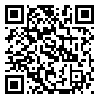BibTeX | RIS | EndNote | Medlars | ProCite | Reference Manager | RefWorks
Send citation to:
URL: http://journal.zums.ac.ir/article-1-951-en.html

 , Soudeh Rezaee- Kalaj1
, Soudeh Rezaee- Kalaj1 
 , Mohammad Reza Zarrindast2
, Mohammad Reza Zarrindast2 
 , Bizhan Jahanguiri2
, Bizhan Jahanguiri2 
 , Mohammad Reza Jafari *3
, Mohammad Reza Jafari *3 

2- Dept. of Pharmacology, School of Medicine, Tehran University of Medical Sciences, Tehran, Iran.
3- Dept. of Physiology and Pharmacology, School of Medicine, Zanjan University of Medical Sciences, Zanjan, Iran. ,
Background and Objective: JWH133 is known to have cannabinoid-2 (CB2) receptor agonist properties. Celecoxib, a selective cyclooxygenase-2 (COX-2) inhibitor, is also known to have antinociceptive properties. Endocannabinoids produce analgesia possibly through cyclooxygenase (COX) pathway. The aim of the present work was: to study the effect of celecoxib on JWH133 induced antinociception and to compare the effects of two different dose ranges of celecoxib (mg/kg and nano g/kg) on the JWH133 antiniciceptive effect. Materials and Methods: We have studied the possible interaction of administration of mg/kg (50-200 mg/kg) and Ultra-Low Dose (ULD) (25 and 50 ng/kg) of celecoxib on the antinociceptive effect of intraperitoneal (i.p.) injection of JWH133 using formalin test in mice. Results: JWH133 (0.01, 0.1 and 1 mg/kg) induced antinociceptive effect just in phase I of the formalin test. Celecoxib (50-200 mg/kg) and its ULD (25 and 50 ng/kg) attenuated and potentiated, JWH133 induced antinociception, respectively. Conclusions: It is concluded that JWH-133 induced antinociception is modulated by celecoxib and mg/kg doses of celecoxib showed opposite effects compare to its ultra-low doses.
Received: 2009/10/22 | Accepted: 2014/06/26 | Published: 2014/06/26
| Rights and permissions | |
 |
This work is licensed under a Creative Commons Attribution-NonCommercial 4.0 International License. |


